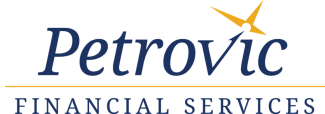
Passing the Torch? Active vs. Passive Investing – Bryson Slater, CFP®
There is a saying that in order to reap big rewards, we must take big risks. As an investment philosophy, that rang true for many decades. However, that may no longer be the case. There has been a massive shift over the past ten years from active to passive investing. Between 2014 and 2018, active investment had outflows of $783 billion, while passive investments saw inflows of $2.5 trillion as noted in a joint report from Cerulli Associates and Morningstar. Many investment professionals are conflicted over which strategy they believe to be best. Is trying to beat the market worth the risk? This is the fundamental issue behind active vs. passive investing.
The goal of active investing is to try to beat the market or outperform a particular benchmark. In other words, some investment managers try to beat the S&P 500 Index, net of its expenses. Active investing requires a hands-on approach. Active portfolio managers believe they can outperform the market by taking advantage of price movements as a result of financial, economic and political events that may impact the market. Active managers believe they thrive under periods of market stress with volatile prices. Taking advantage of these circumstances, in theory, provides a greater potential for excess returns above and beyond that investment’s benchmark.
The opportunity to participate in these active funds comes at a cost: Higher expenses. Actively managed investments charge a premium due to trading costs, additional manpower and research in the hope of giving its investors better-than-benchmark returns. Active managers not only need to outperform their benchmark, they need to outperform it by more than the fee they charge. Although active funds have a much better chance of hitting a home run, they also have a much higher chance of striking out. This swing for the fence approach has resulted in 82% of active fund managers underperforming the S&P 500 over the past five years.(https://www.cnbc.com/2019/10/10/passive-investing-at-wall-street-firms-to-rise-to-50percent-expert-predicts.html)
Passive investing, also called index investing, is a much more hands-off approach. The goal of a passive investment is to match the performance of the market. Fund managers create funds that attempt to replicate a specific index by seeking to own all the stocks or bonds in the same proportion of a given market index. Passive funds are generally much cheaper than active funds since not as much trading, manpower and research is required. Passively managed funds also generally provide clients with a lower tax bill for money invested in non-retirement accounts. This tax efficiency is the result of less capital gains being paid out since not as much trading is required.
The idea of passive investing is a relatively new concept compared to its active counterpart. Vanguard introduced the first S&P 500 index fund in 1976. This first passively managed fund got the ball rolling on the phenomenon of taking cost into consideration. Prior to this, risk and return were the key components used when analyzing an investment. An investment’s cost turned out to be a really good predictor of success. Using a fund’s expense ratio as a guide to help choose a more successful fund helped in every asset class (e.g., stocks and bonds) from 2010-2015, according to a Morningstar study conducted in 2016 (https://www.morningstar.com/articles/752485/fund-fees-predict-future-success-or-failure). They found that higher-cost funds are much more likely to fail and be merged with other funds.
Given the higher cost and alarming rates of underperformance associated with actively managed investments, you may be wondering if the risk is worth the reward. The good news is active investing is much more favorable in some asset classes compared to others. The graphic below is a snippet from Morningstar’s August 2019 Active/Passive Barometer report that shows the success rates for active funds over a few different asset classes. Using active funds is much more favorable when investing in bond or international stock funds compared to large U.S. stocks. For example, over the last ten years, only 8% of all U.S. Large Blend stock funds that compare themselves to the S&P 500 Index have actually beaten the S&P 500 Index, net of those funds’ expenses. That is a poor success rate. Even the 20-year success rate of 18% is still poor.
There is still much debate among analysts about whether active or passive is a more prudent approach. One cannot argue with the historical data. However, no one can predict if past trends will continue over the next five, ten and 20 years. At Petrovic Financial, we believe combining active and passive investments is presently the best way to construct a diversified, lower-cost portfolio. We utilize passive investments for most of our U.S. stock positions and small international stocks. Whereas our bonds and large international stocks are invested in actively managed funds.
In summary, passive investing provides distinct benefits to you in terms of cost and tax efficiency, and we believe these investments are an integral part of any portfolio nowadays. As always, our investment committee is research-driven, and we will continue to monitor the active vs. passive research and adjust our portfolios accordingly.

